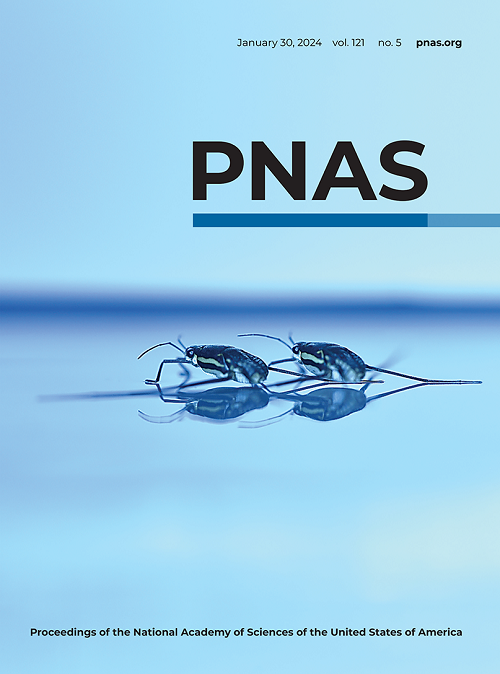A circular RNA overcomes acquired resistance to BET inhibitors by antagonizing IGF2BP2-mediated c-MYC translation in TNBC.
IF 9.1
1区 综合性期刊
Q1 MULTIDISCIPLINARY SCIENCES
Proceedings of the National Academy of Sciences of the United States of America
Pub Date : 2025-07-01
DOI:10.1073/pnas.2504320122
引用次数: 0
Abstract
Bromodomain-and-extraterminal-domain (BET) proteins are promising therapeutic targets for refractory solid tumors, including triple-negative breast cancer (TNBC). However, acquired resistance to BET inhibitors (BETi) remains a significant clinical challenge. Elucidation of the underlying mechanisms of BETi resistance is therefore of critical importance. In this study, we identified the RNA-binding protein IGF2BP2 as a key driver of acquired BETi resistance in TNBC, primarily through its role in enhancing the translation of c-MYC mRNA. Given that IGF2BP2 is not an ideal target for small-molecular drugs, we performed RNA immunoprecipitation sequencing (RIP-Seq) and found circRNA-BISC as a potent IGF2BP2 repressor. BISC effectively inhibited both c-MYC translation and BETi resistance. Notably, BISC contains a "CAC-linker-XGGX" motif that specifically binds IGF2BP2 rather than to IGF2BP1 and IGF2BP3. The efficacy and selectivity of BISC in targeting IGF2BP2 prompted further exploration of BISC-based RNA therapeutics for TNBC. In vitro transcribed and circularized BISC, when combined with the BETi OTX-015, demonstrated impressive tumor regression in BETi-resistant TNBC models without detectable toxicity. These findings establish BISC as a potent IGF2BP2 repressor and highlight the feasibility of circRNA-based therapeutic strategies to overcome BETi resistance in TNBC.环状RNA通过拮抗igf2bp2介导的TNBC中c-MYC翻译来克服对BET抑制剂的获得性耐药。
溴域和外结构域(BET)蛋白是治疗难治性实体肿瘤(包括三阴性乳腺癌(TNBC))的有希望的靶点。然而,获得性耐药对BET抑制剂(BETi)仍然是一个重大的临床挑战。因此,阐明BETi耐药的潜在机制至关重要。在这项研究中,我们发现rna结合蛋白IGF2BP2是TNBC获得性BETi抗性的关键驱动因素,主要是通过其增强c-MYC mRNA翻译的作用。鉴于IGF2BP2不是小分子药物的理想靶点,我们进行了RNA免疫沉淀测序(RIP-Seq),发现circRNA-BISC是一种有效的IGF2BP2抑制因子。BISC有效抑制c-MYC翻译和BETi抗性。值得注意的是,BISC包含一个“cac - linkator - xggx”基序,特异性结合IGF2BP2而不是IGF2BP1和IGF2BP3。BISC靶向IGF2BP2的有效性和选择性促使基于BISC的RNA治疗TNBC的进一步探索。体外转录和循环化的BISC与BETi OTX-015联合使用时,在BETi耐药TNBC模型中显示出令人印象深刻的肿瘤消退,没有可检测到的毒性。这些发现证实了BISC是一种有效的IGF2BP2抑制因子,并强调了基于circrna的治疗策略在TNBC中克服BETi耐药的可行性。
本文章由计算机程序翻译,如有差异,请以英文原文为准。
求助全文
约1分钟内获得全文
求助全文
来源期刊
CiteScore
19.00
自引率
0.90%
发文量
3575
审稿时长
2.5 months
期刊介绍:
The Proceedings of the National Academy of Sciences (PNAS), a peer-reviewed journal of the National Academy of Sciences (NAS), serves as an authoritative source for high-impact, original research across the biological, physical, and social sciences. With a global scope, the journal welcomes submissions from researchers worldwide, making it an inclusive platform for advancing scientific knowledge.

 求助内容:
求助内容: 应助结果提醒方式:
应助结果提醒方式:


